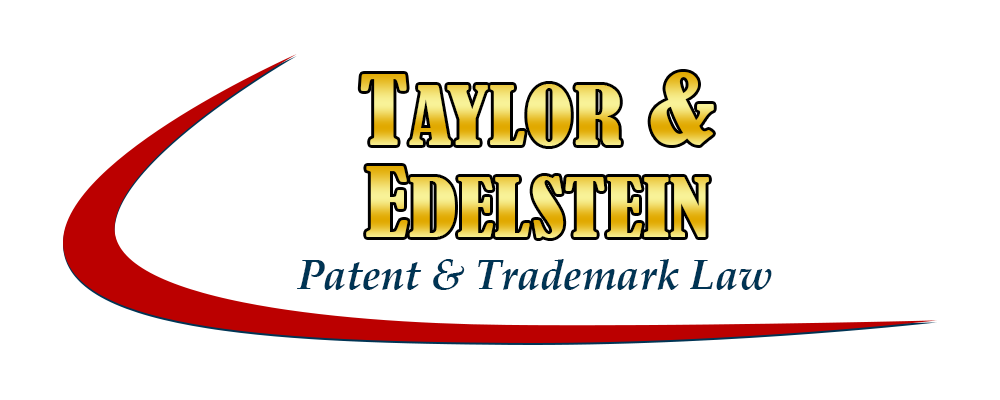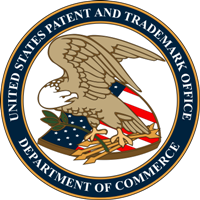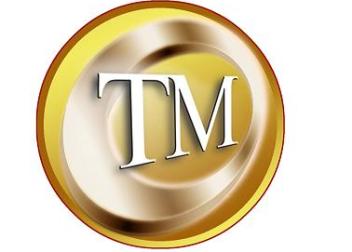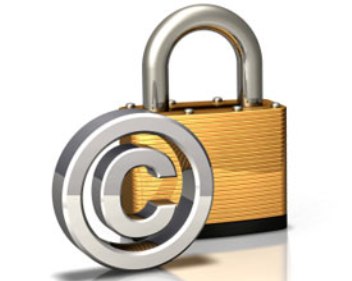Overview
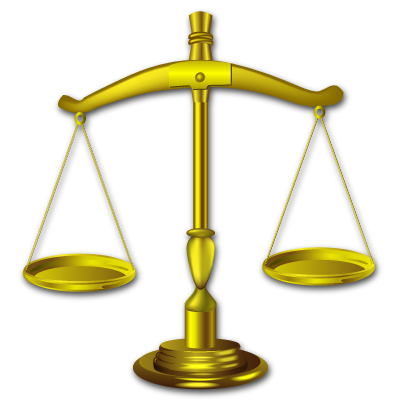
“The three great essentials to achieve anything worthwhile are, first, hard work; second, stick-to-itiveness; third, common sense.” – Thomas A. Edison
Becoming a patent attorney takes a lot of hard work and persistence. Generally, it takes seven years to become a patent attorney – four years of undergraduate and three years of law school. It’s difficult to become a patent attorney, but the long-term rewards outweigh the arduous times.
Patent attorneys can be thought of as specialized lawyers that have the qualifications to represent inventors and companies in obtaining patents and litigating patent matters. In a broad sense, patent attorneys use their knowledge of science to explain and argue differences in innovation to patent examiners, judges and juries.
Areas of Practice: Patent Litigation & Patent Prosecution
Patent attorneys can practice in two basic areas: patent litigation and patent prosecution. Of course, it is also possible for a patent attorney to do both, depending on the client base of the attorney or firm.
Patent litigators practice patent law within the courtroom setting. When a dispute arises between patent holders, each side will hire a patent litigator to represent their case in court. Patent litigation can be more lucrative than patent prosecution; however, packaged with this increase in potential earnings is usually greater stress and heightened pressure. A litigator’s work is based around the courtroom’s timeframe, meaning the hours can be unpredictable.
Patent prosecutors represent clients before the United States Patent and Trademark Office (USPTO). If inventors or companies wish to patent their invention, they customarily turn to a patent prosecutor to draft a patent application that explains how their invention works. Upon the approval of the client, the patent prosecutor then files the patent application with the USPTO and subsequently advocates that the invention is eligible for patent protection. Patent prosecution generally has more predictable hours than patent litigation. It is often referenced that the day-to-day work of patent prosecution is less stressful and demanding than patent litigation, but that may be more of a result of a regular and predictable schedule than that of lessor stakes.
Steps to Become a Patent Attorney
Obtain a Bachelor’s Degree in a Technical Subject
Normally, the first step is obtaining a technical degree from an accredited university. It’s most beneficial to choose a major in engineering, physics, technology, biology or chemistry. However, a different technical subject may be suitable depending upon a certain field of law. For a complete list of acceptable degrees, please see the USPTO’s technical subject requirements.
Take the LSAT & Apply for Law School
LSAT (Law School Admissions Test)
The LSAT is a standardized placement test that measures some of the essential skills used during law school. It tests the ability to think critically and analyze the reasoning of arguments. The LSAT consists of three graded sections (reading comprehension, analytical reasoning and logical reasoning) and one non-graded essay section. The test is administered four times a year, and as a general rule of thumb it should be taken a year before entering law school.
Law school admission offices will evaluate the totality of a student’s LSAT score, undergraduate GPA, extracurricular activity, work experience, references and writing sample. Yet, the LSAT score is arguably the most important factor in determining who makes the initial cut.
LSAT scores are graded on a scale from 120-180. The average LSAT score is approximately 151, and anything above a 170 is seen as top notch. The median LSAT score at Harvard Law School varies around 173.
Application Process
In applying to law schools it’s okay to shoot for the stars, but just be sure to practically apply to a few safety net options. Be sure to consider where you want to practice law in the future. The majority of law students tend to get a job in the same state or tri-state area where they went to law school.
After being accepted by a few law schools, it’s time to choose where you’ll spend the next three years. A widely accepted cannon is to attend the highest ranked law school with the best scholarship offering. Also, it’s important to consider the school’s geographical location, its amenities and prominence in a particular legal field.
Study and Pass the Patent Bar
Overview
The patent bar is really another threshold to becoming a patent attorney. It is a government issued standardized exam that tests the rules, regulations, and procedures of the USPTO. Upon passing the patent bar, one can represent a client in patent prosecution matters before the USPTO.
In total, the patent bar currently costs $395 (2014). The test has 100 multiple-choice questions, which are divided up in two 50-question sections. Each section is 3 hours long and there is an hour break in-between, in total it’s a 7-hour process. To pass the exam, you must answer 70% of the questions correctly. Note, 10 questions of the exam are beta questions and are not scored, of course you won’t know which questions are un-scored. So that means you must answer 63 of the 90 remaining questions correctly.
The test is an open book test, meaning that a copy of the MPEP (Manual of Patent Examining Procedure) is provided. Though the answers to all of the questions can be found in the MPEP, be sure to know how to search the MPEP efficiently before taking the test. After all, the MPEP is over 3,000 pages long.
Technically the patent bar can be taken before, during or after law school.
However, it’s still better to pass the patent bar before graduating law school. Having this credential on a resume can open a variety of job opportunities that wouldn’t be available otherwise. Even for patent litigators, though the patent bar is not required, it’s still wise to pass the patent bar before graduating law school since it is often a requirement for patent litigation firms.
Study Material
About half of those who take the patent bar fail. So please don’t make the mistake of treating the test lightly. There are a plethora of study courses to choose from, so pick the course that best fits your learning style. Remember that there is no substitute for actually studying. Among any of the in-class courses, online study programs, online forums or book guides, the best way to prepare for the test is by taking practice tests.
Here’s a comparison of some current study materials:
| Study Course | Features | Price |
| PLI (Practicing Law Institute) | Live Study Course, or Home Study Course Both courses include study guides, simulated exams, and hotline | Live Course: $2,795Student Discount: $1,845 |
| PatBar | Online videos, study guides, flash cards, online personal support, previous tests | Regularly: $895Current Offer: $595 |
| OmniPrep | Online support, MPEP study guide strategies, previous tests, money back guarantee | $495 |
| Study Guide Books Bullseye Longacre | Study guide, tips on how to search the MPEP, sometimes they contain previous exams. | $100 or less |
Don’t be fooled, the majority of the information within any of these patent bar courses or guidebooks can be accessed for free. The cost is really a matter of compiling the information all in one place and providing a concrete study plan.
Some helpful free resources include: practice questions from mypatentbar.com and AIA changes from USPTO’s AIA FAQ.
Apply for the Patent Bar
Begin with the USPTO’s General Requirements Bulletin. This Bulletin explains who is eligible to take the patent bar and how to register to take the patent bar.
Requirements:
The categorical requirements to sit for the patent bar are residential status in the U.S., technical background, and moral character. It’s fairly easy to meet the requirements for residential status and moral character. The technical background requirement however may be harder to meet. As defined by the USPTO, a technical background must fit in one of these classes:
- Class A: a technical and accredited bachelors degree
- Class B: a non-technical bachelors degree with sufficient coursework hours in a technical field
- Class C: a non-technical bachelors degree, but one must have passed the Fundamentals of Engineering test (FE).
For an in-depth description of these classes and all of the other various requirements, see page 4 of the USPTO’s General Requirements Bulletin.
Application Process: Register with the USPTO & Prometric
The USPTO approves an applicant to sit for the Patent Bar. To register, begin by filling out the forms on pages 31 and 32 of the General Requirements Bulletin. The USPTO requires these two pages, fees, and official transcripts. Additional information may be required depending on a given technical background category. The fees include a general non-refundable application fee ($40) and a registration fee ($200 for the computerized test, or $400 for the paper test). To confirm that the documents were received, an applicant may include a self-addressed postcard, which the USPTO will stamp “Received” and mail back. The USPTO will then send a letter that discloses whether you are qualified to take the patent bar. Upon approval, an applicant only has a 90-day window to take the exam.
Prometric is the company that administers the exam. After approval from the USPTO, the applicant must register with Prometric to choose a date and an exam center in order to actually take the Patent Bar. Prometric offers the exam almost any day of the year, but spots will fill up quickly so be sure to sign up earlier rather than later. The service charge to take the Patent Bar is $155.
Pass the Patent Bar
Bring a government issued ID (Driver’s License or Passport) and a #2 pencil to the test center. Stay calm and pass the Patent Bar. The exam results are shown to you right after you complete it. Just don’t forget to celebrate your accomplishment.
Graduate from law school
The first year of law school is typically the hardest. In almost every law school, students will take the same generic first year curriculum. The first year really teaches you how to think. Law school will restructure and subsequently test your ability to think critically. It’s not about who has the right answer, it’s who has the best reasoning to support an answer.
Cold Calling. Your name was just called, your heart starts pounding out of your chest, your mouth goes dry, and your mind goes blank as a dust bowl with only a passing tumbleweed whispering, “Uhhh, can you repeat the question?”. Don’t be afraid, most professors use cold calling to stimulate discussion in class, it’s not an intimidation method. It’s a vital aspect of the Socratic method, which helps you learn to reason and process like lawyers. If you “utterly fail” in cold calling, which all lawyers have done before – it’s not a big deal. You’ll probably be the only person in class that will remember that day.
Though three years of law school seems like a big commitment, it will go by way too fast. In midst of all the stress, enjoy this season in life. Law school can be a great opportunity to join clubs, study abroad amongst a different culture, practice your advocacy skills in moot court, and make lifetime friendships – carpe diem, make the most of these three years.
Take the State Bar
Overview
The Bar is the last major hurtle to becoming a lawyer. In order to practice law in a particular state, one must pass that state’s particular bar exam. Generally, the Bar lasts two days (sometimes three if the state requires it) and covers the Multistate Bar Examination (MBE), locally crafted essay questions on state law issues and/or the Multistate Essay Examination (MEE) and the Multistate Performance Test (MPT). Also, most states require the Multistate Professional Responsibility Examination (MPRE), which is administered separately three times a year. In summary, most state bars consist of the MBE, essays, the MPT and the additional MPRE.
The MBE is a nationally standardized test with 200 multiple-choice questions covering the general first year courses of law (Constitutional Law, Contracts, Criminal Law, Evidence, Real Property and Torts). It’s administered in 49 states, and in the District of Columbia. Louisiana is the only state that doesn’t use the MBE, partly because of its own unique civil law system. In fact, Louisiana’s bar exam lasts nearly 22 hours, making it the longest in the nation.
The MEE is a collection of nine, 30-minute, essay questions. Most jurisdictions choose six of the nine essay questions, and some states conglomerate the MEE’s essay questions with their own localized essay questions. The MEE covers Corporations, Civil Procedure, Conflict of Laws, Constitutional Law, Contracts, Criminal Law and Procedure, Evidence, Family Law, Real Property, Torts, Trusts and Estates and the Uniform Commercial Code.
The MPT, or an individualized state issued Performance Test (PT), measures the aptitude to perform real-world tasks, which may include writing a memorandum of law, a persuasive brief, an affidavit or a settlement agreement. It’s perhaps the most time intensive section because an applicant only has 90 minutes to read the prompt and complete the writing assignment.
The MPRE is a 120-minute, 60-question multiple-choice examination administered separately from the bar exam. Depending on state jurisdiction it can either be a prerequisite or corequisite to a State Bar exam. It tests professional responsibility in regards to the legal profession; for example, client-attorney relationships, legal malpractice, transactions and a lawyer’s duties to the public and the legal system.
It’s best to take the Bar exam during the summer right after graduating from law school, but don’t sacrifice on study time. Plan on blocking out two months just to study for the Bar, as if it were a full-time job.
Choose a Bar Review Study Course
The cost of failing the Bar is much worse than the price of a review course. Everyone sees the frustrating conundrum of paying lots of money for law school, which doesn’t prepare you to take the single greatest test to become a lawyer, so you can pay more money to buy a review course to teach yourself the material that you actually need to know. If you don’t like it, change it, after you’ve purchased a review course and passed the Bar.
Here’s a non-inclusive chart of well-known bar review courses. Keep in mind, there is no replacement for taking practice exams, which is by far the best preparation.
| Bar Review Course | Features | Price |
| BARBRI | In person and online:6-7 week course Lectures, workshops and simulated exams | Prices Vary by State:≈ $4,000 |
| KAPLAN | In person and online:36 day lecture period Lectures, workshops, study guides and simulated exams | Prices Vary by State:≈ $3,000 |
| THEMIS | Online:8 week course Milestone Exams Published pass rates | $1,700 |
| BARMAX | Online:50 hours of audio lectures Practice questions, outlines and 2 essay revisions Money back guarantee | $999 |
Pass the Bar
California, Louisiana and the District of Columbia typically have the lowest bar passage rates, usually around 43%. If you’re planning on taking the bar in one of those states, good luck. Even if you do fail, remember that failure is an event, not a person – pick yourself back up, dust yourself off and let the bell ring round two. Above all, take the exam with confidence. Passing the exam is not easy, but it will undoubtedly pay off.
It usually takes about 5 to 10 weeks before you’ll receive your score. California probably has the longest wait time, clocking in around 17 weeks.
Don’t forget to celebrate the victory of passing the bar. It’s quite an accomplishment; you’re an official patent attorney now.
Live a good and fulfilling life
As a patent attorney you will live quite a privileged life. The average income of a patent attorney is notably above the average salary in the U.S., but being privileged really isn’t about the money.
Being privileged means that you’ll have the ability to open the door for someone else. In other words, you’ll have the opportunity to make opportunities for others. It’s not a handout, it’s an opportunity for other people to take ownership for themselves and become something better. That opportunity may come in the form of a charity, working pro bono, taking the time to train an associate, or spending more time with your kids. Whatever that will be for you, be generous in giving opportunities to others.
References:
